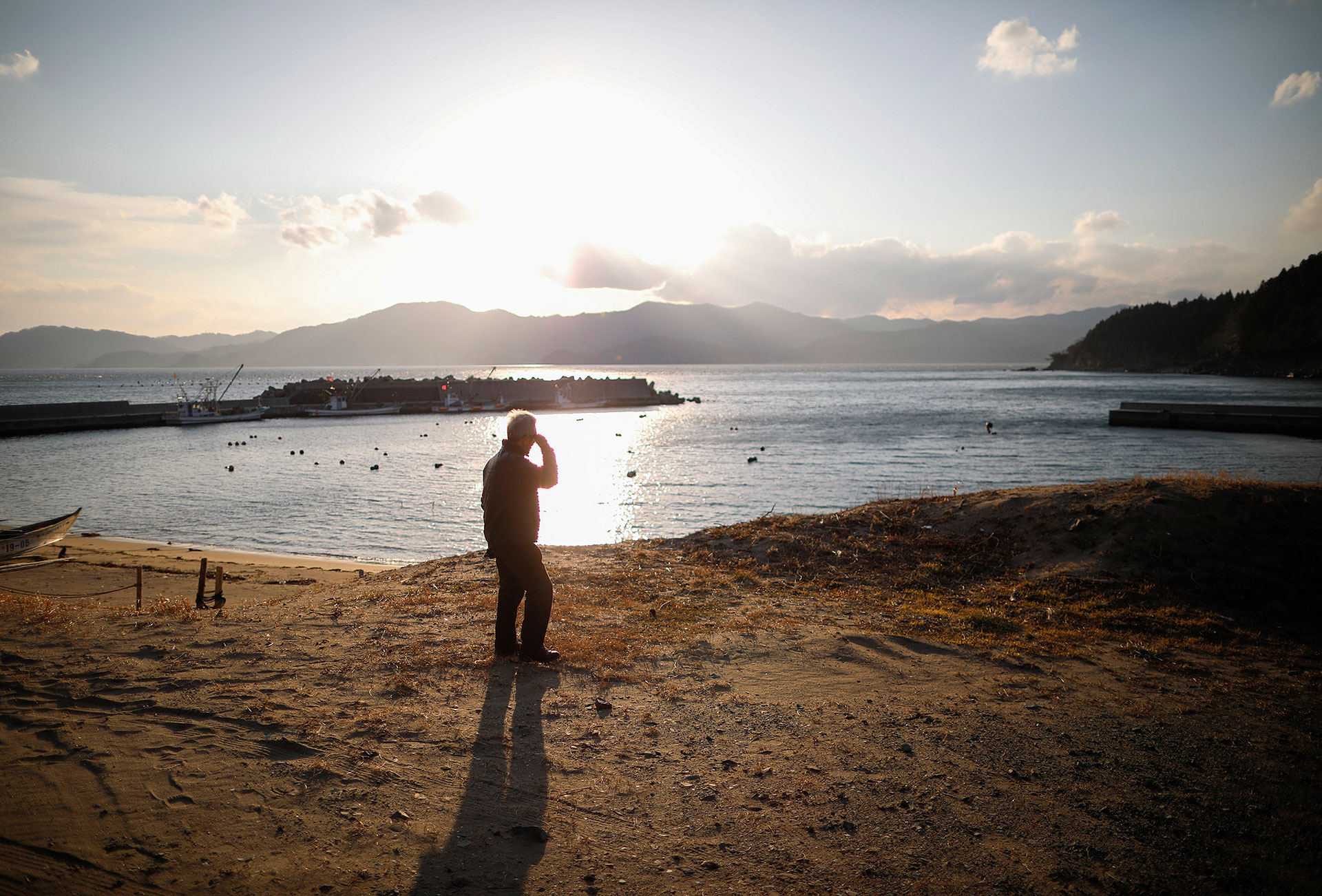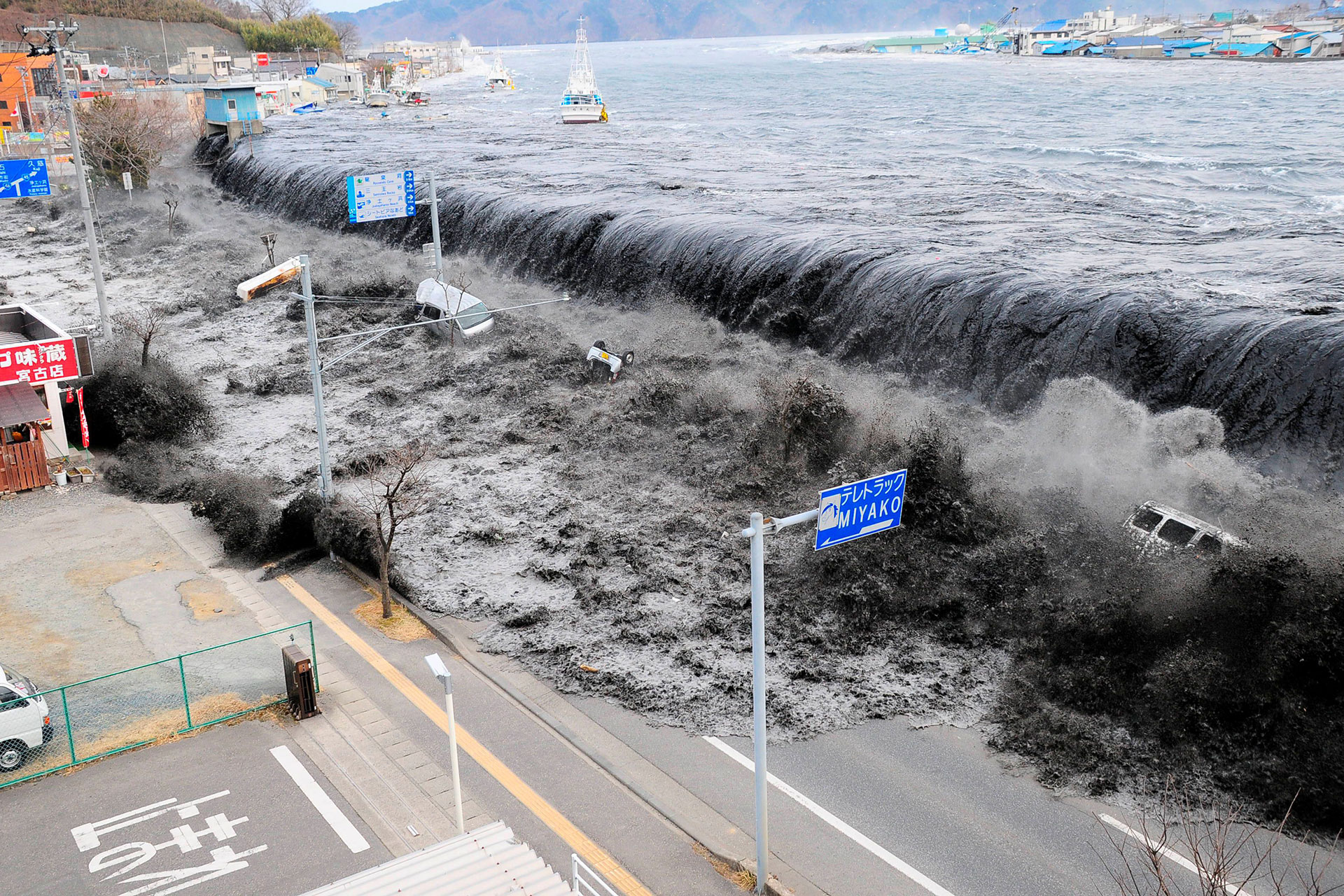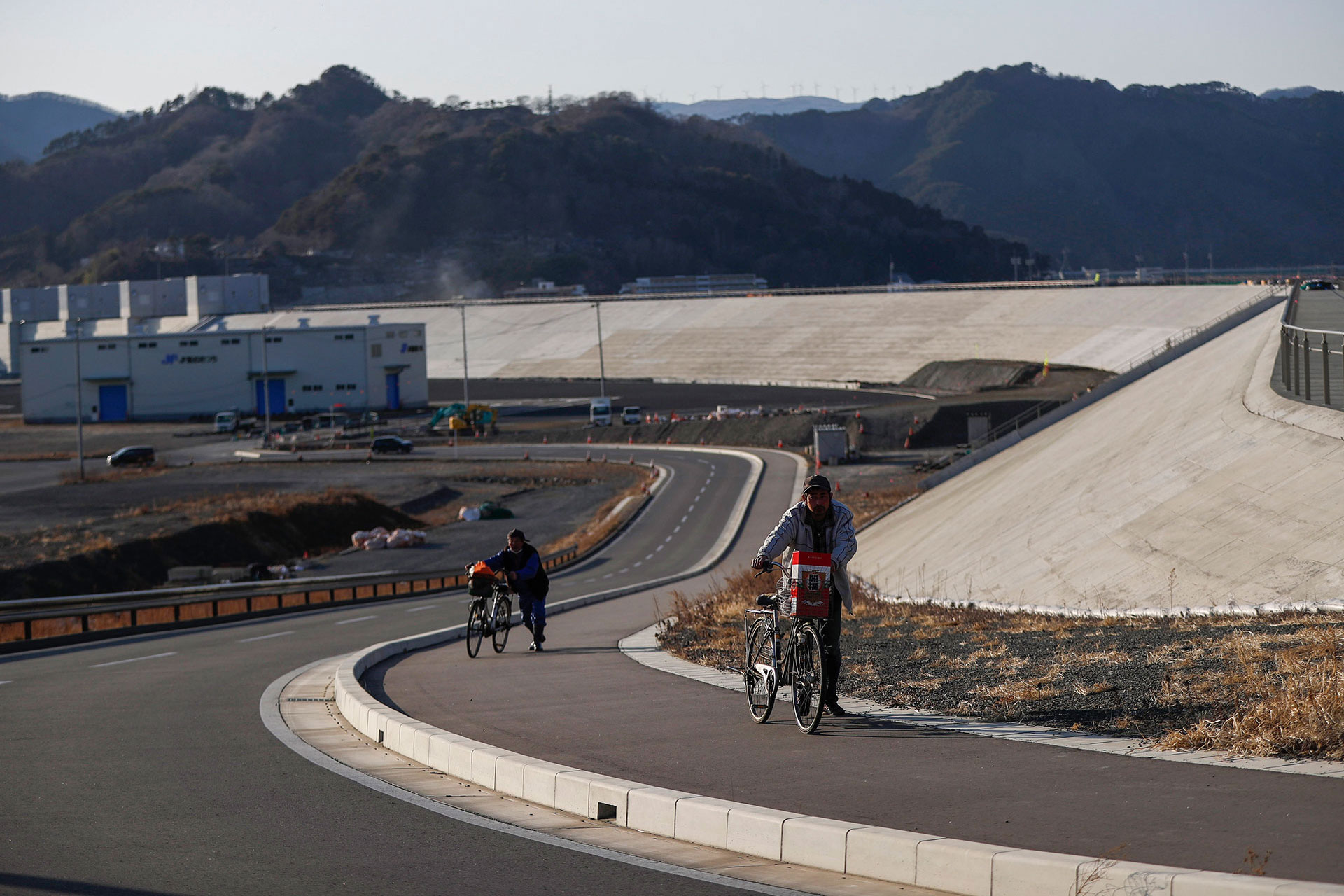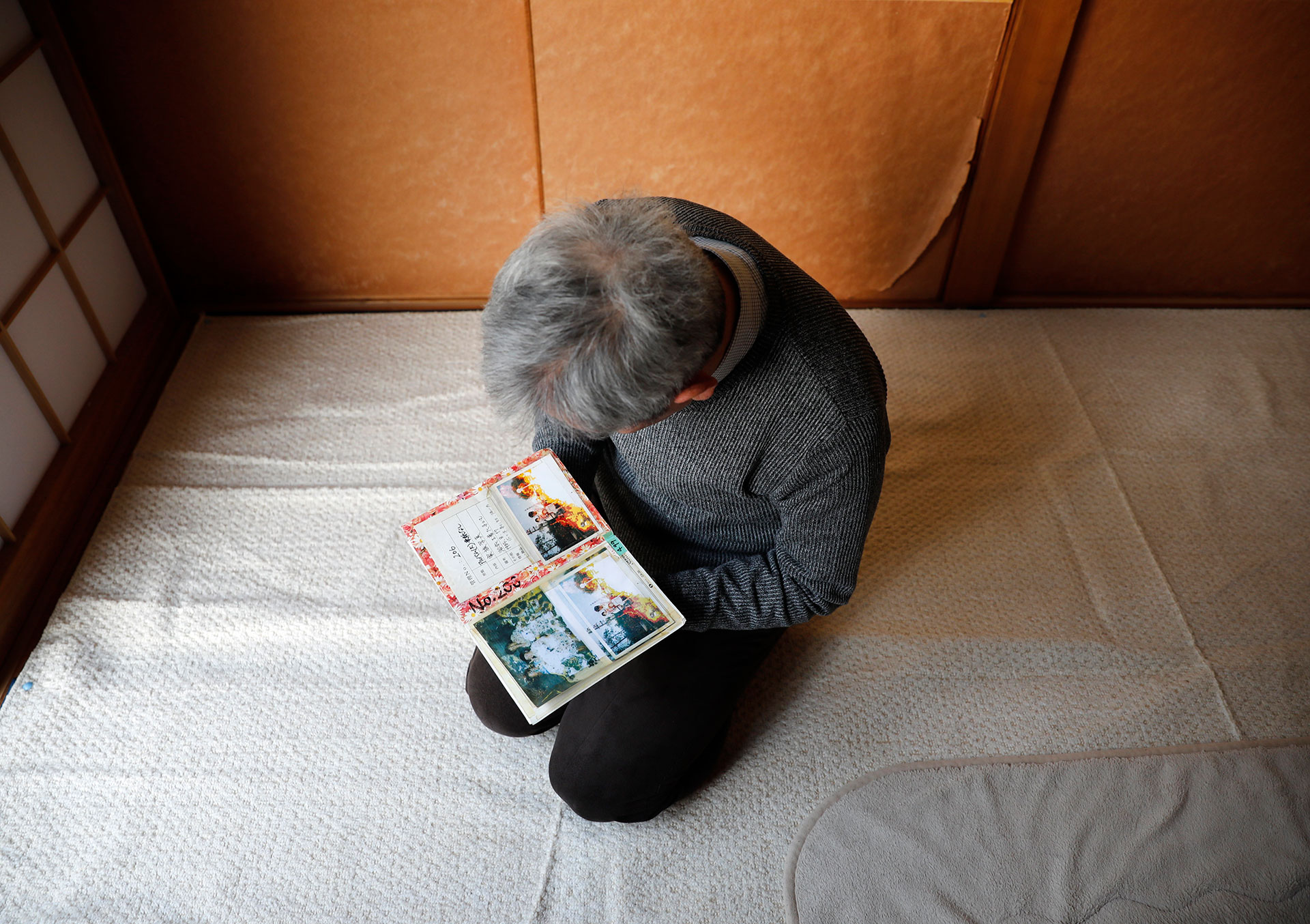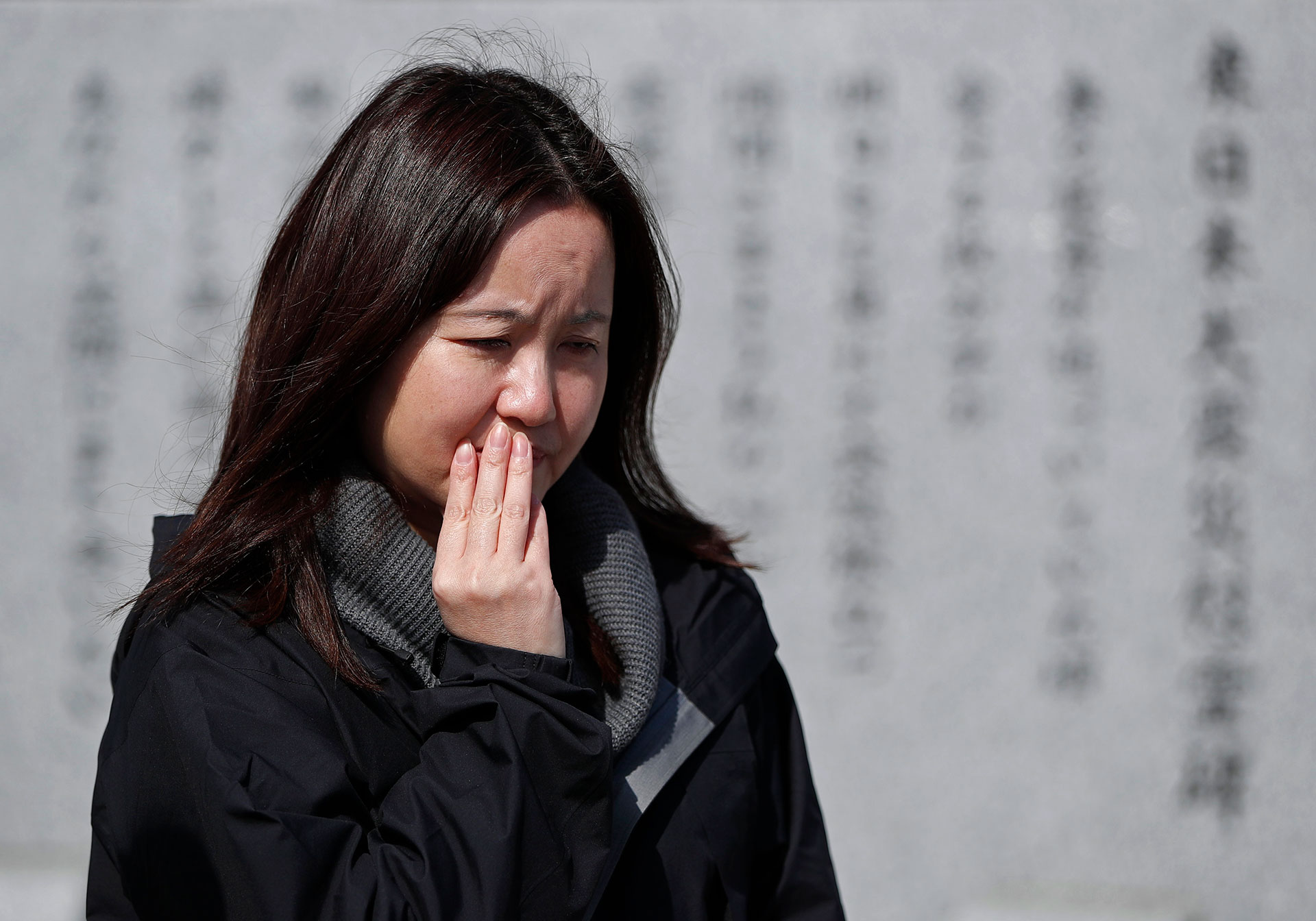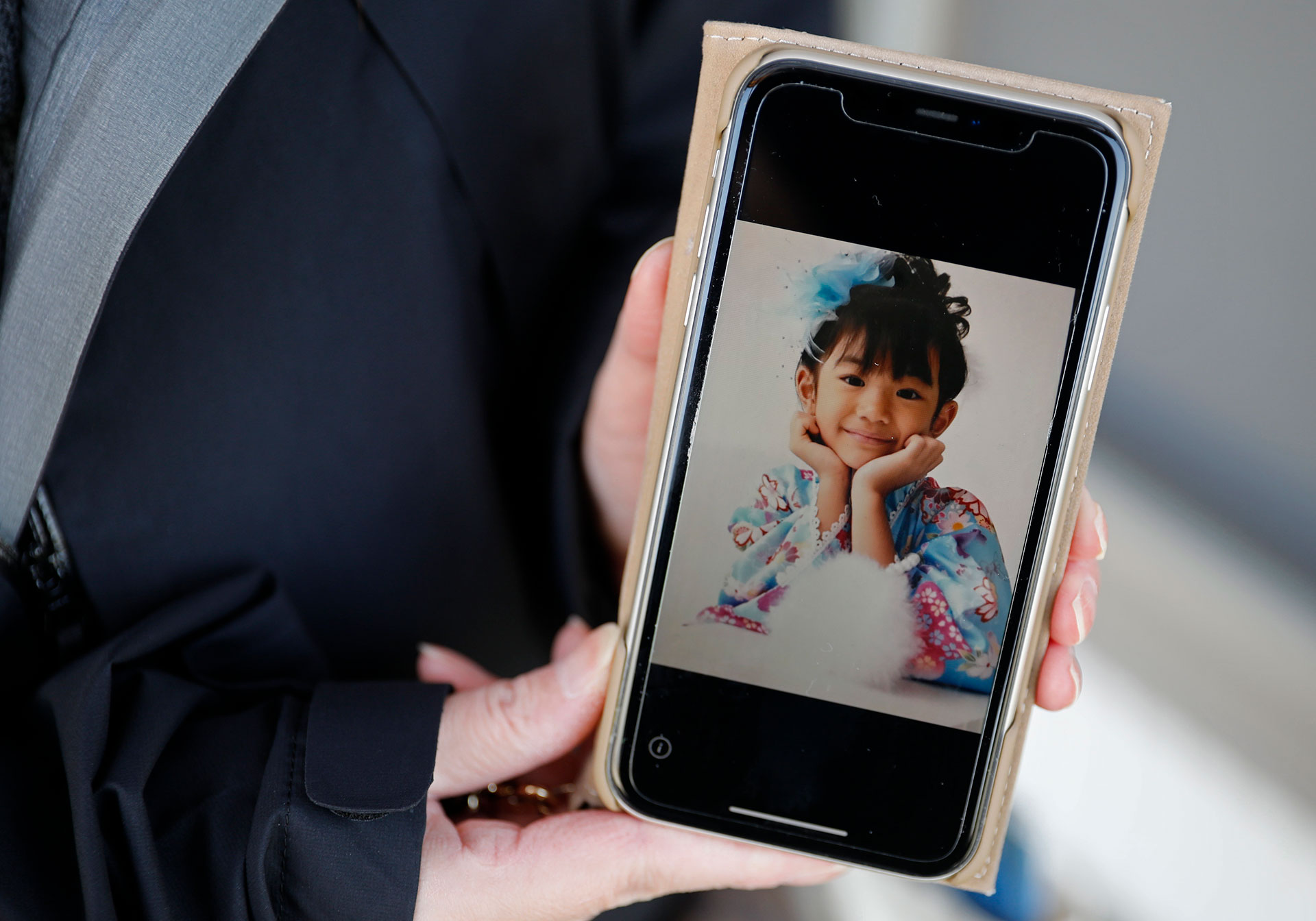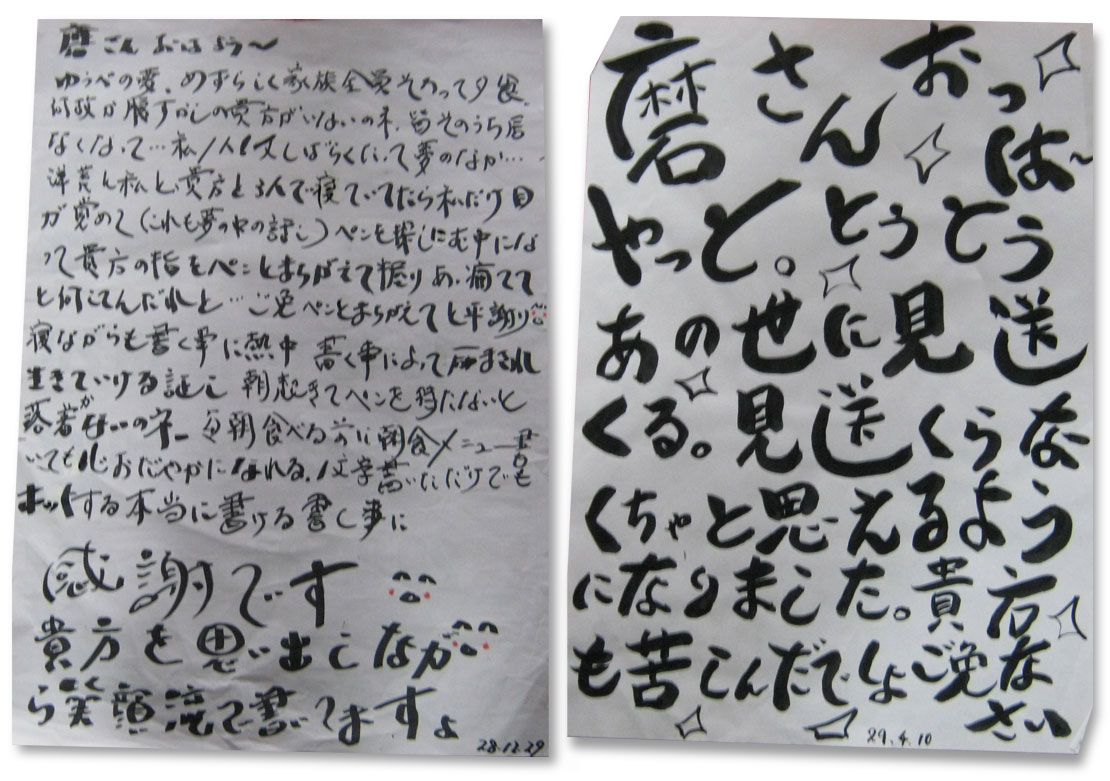After the 2011 disaster, Japan built new neighborhoods, parks and schools. But the scale of loss is beyond any policy response. Today, many of those who remain in hard-hit coastal towns are haunted by all that was lost.
When the tide finally receded, the world had changed. Trucks and houses had been swept aside like children’s toys, leaving the living to comb through a wasteland of mud and debris for their dead. Ten years on, the living are still searching, their grief never subsiding.
A father lives alone in a house at the end of a long driveway lined with cherry trees. He surrounds himself with books on the disorder that isolated his younger son in his room, unable to flee even when his mother begged him to evacuate as the tsunami roared toward them.
A mother is haunted still by the cries of stranded children, maybe even her own, calling out for help in the darkness. Even now she carries around a laminated schedule of her daughter’s kindergarten bus, as if to prove that her 6-year-old should still be alive.
A wife never gave up hope that her husband would return to her. In scribbled letters on the back of calendars, she chided her husband for staying away, sometimes writing his imagined response encouraging her to go on without him.
The 10th anniversary of the March 11, 2011, earthquake and tsunami will be a nationally televised event, with dignitaries in black suits gathering at a theater in Tokyo, where they will bow their heads and mark the moment of the disaster. For many survivors, the day will be marked by quiet prayers and family visits to gravesites.
|
|
| A giant wave tosses large vehicles like children’s toys in the Japanese city of Miyako City after an earthquake struck the area March 11, 2011. Photo: Mainichi Shimbun/via Reuters |
But for others, the day will feel little different than any other date on a calendar. They remain suspended, trapped in those frantic hours a decade ago.
The earthquake and tsunami killed nearly 20,000 people on a stretch of Japan’s Pacific coast more than 400 kilometers (250 miles) northeast of Tokyo. The disasters also triggered multiple meltdowns at the Fukushima nuclear plant, which forced the evacuation of tens of thousands of residents.
The central government pledged to rebuild the region and has spent around 31 trillion yen ($286 billion) on reconstruction. In the span of a few years, Japan built new neighborhoods, parks and schools. But the scale of loss here is beyond any policy response. Thousands of residents have moved away from the hardest-hit cities, with many of those who remain haunted by all that was lost.
While some survivors look backward, the larger Japanese public is preparing to celebrate the upcoming Tokyo Olympics, an event the government is intent on using to showcase its recovery from the disaster.
In Rikuzentakata, a city that lost almost a tenth of its population in the tsunami, a 12.5-meter (41-foot) sea wall encircles the coastline, a project designed to protect residents from future floods. Instead, the city can feel like a fortress where the concrete wall obscures any view of the ocean. On a chilly night in March, a howling wind drowned out any sound of lapping waves. In the darkness, only a slither of the sea was visible above the slabs of concrete, its serene surface concealing the noiseless churn of water below.
Yoshihito Sasaki, 70, can see the ocean from his front room, but he has long ago given up fishing or taking walks by the sea. He moved into his current home after the tsunami swept away his old house here, where he lived with his wife and two sons.
|
|
| Massive walls built to withstand a future tsunami can obscure any view of the ocean in the hard-hit coastal towns. Photo: Reuters |
In March 2011, Sasaki was a few weeks shy of retirement, working as a principal in an elementary school built on higher ground in Hirota, a fishing village half an hour’s drive from his family’s home.
After making sure that all of his students were safe, and learning that his older son, Yoichi, had survived, Sasaki began searching for the rest of his family. He had already assumed the worst about his other son, 28-year-old Jinya, who had been a “hikikomori” for a decade, a Japanese term for people who withdraw from society. When the disaster hit, Jinya hadn’t left their house for two years.
“I thought maybe my wife had survived, so when I went to shelters, I asked them if they saw a woman who had lost her mind,” Sasaki said quietly, averting his eyes. He knew that leaving her son behind in the tsunami would have destroyed Mikiko, his wife.
Sasaki was unable to find Mikiko in any of the evacuation centers. Her body was recovered weeks later.
Later, he learned that his wife had tried to coax their son out of the house as the water kept rising. Jinya refused to leave, saying until the end that he didn’t want to see other people. Mikiko finally ran out of the house, taking shelter on a neighbor’s roof with their elder son. From there, they watched the wave swallow their home.
Sasaki took off his glasses and busied himself with a pile of newspaper clippings on his table. A warm orange light filled the room, which was still cluttered with boxes his surviving son left behind when he moved out in December.
For almost a decade after the disaster, Sasaki and his son lived together but never discussed the day of the tsunami. The two men finally talked over sushi a few months ago, when his son was preparing to move away.
“I asked my son what my wife said to him at the end,” Sasaki said. The last time his son saw her, she was holding onto a piece of wreckage in a black tide, yelling out to him. “He told me that she was screaming for him to live,” he said, sighing. “She told him to survive.”
Yoichi held onto wreckage and drifted for hours in the tsunami’s waters before he was finally rescued.
|
|
| Sasaki cradles photos of his family that were damaged in the disaster and recovered by volunteers. He now lives alone after his surviving son moved out recently. They finally talked about what happened the day of the tsunami, 10 years later. Photo: Reuters |
After the tsunami, Sasaki bought dozens of books about his late son’s condition, out of regret that he had not done more to support his late wife. Turning on the fluorescent light in his room, Sasaki pulled out a folder full of newsletters that he has written in the past decade about the hikikomori. He also moderates a support group for parents every month where he listens to others vent and cry about their reclusive children.
Even so, Sasaki is plagued by regret. Several times, he repeats that his surviving son may still blame him for not doing more to help his wife with Jinya.
“I thought maybe time would solve things, but I know now that’s not the case. There are things you want to forget but can’t,” he said, with a pause. “Some memories, those key memories in your mind, are actually more vivid now.”
In Ishinomaki, a coastal city in neighboring Miyagi prefecture, nearly 3,200 people died in the disaster. One of them was Airi, Mika Sato’s daughter, who loved playing with her little sister and wanted to be a TV presenter when she grew up.
Airi was at a local kindergarten when the earthquake struck. Shortly after, teachers put Airi and four others on a bus, which took them down the hill and closer to the coast.
It took three days for Sato to find Airi. She walked through a field of rubble where thin plumes of smoke still smoldered between bits of plywood and metal. One of the other parents eventually found the charred remains of a yellow school bus hidden under what had been the metal roof of a house.
“By the time we found them, all that was left of her was as small as a baby’s,” said Sato, cradling her arms as if she were holding her daughter. “We were so afraid the wind would blow them away.”
Sato said it wasn’t until later that she heard from neighbors that they could hear children calling for help until midnight, hours after a 28-foot tsunami swept into Ishinomaki.
|
|
| Mika Sato, who lost her daughter Air, in the tsunami, heard from neighbors that they could hear children calling for help hours after the wave hit her town. Photo: Reuters |
Sato and other parents kept asking the school for an explanation of what exactly happened on the day of the tsunami. Five months after the disaster, Sato and three other families filed a lawsuit against the operator of the kindergarten.
“We thought we would find the truth in court,” said Sato, 46. “It was completely different from what we expected; we didn’t get anywhere near the truth.” Sato had hoped that the school would explain why it had decided to put the children on a bus toward the coast after a massive quake, but school staff repeated in court that they had not heard the tsunami siren, she said.
Sato and other plaintiffs reached a settlement with the school in 2014. As part of the settlement, the school took legal responsibility and promised to provide a “heartfelt apology” to the families, Sato and her lawyer, Kenji Kamada, said. Though the school has sent flowers, Sato said she has never received a formal apology.
A lawyer who represented the school, which is now closed, said it continued to send flowers to the families involved in the case every year. He declined to comment further on the matter, referring questions on the details of the settlement to the plaintiffs.
Sighing, Sato walked to a memorial built along a busy coastal road, close to where she had found her daughter. Taking off her mask, she touched Airi’s name carved into stone.
“The anger doesn’t go away,” she said, adding that as a naturally shy person, she had never wanted to be a public figure embroiled in such a court case. “Our precious daughter died and the fact that …,” she started to say, before a local man approached her, saying he recognized her from TV interviews.
After reminiscing about the disaster, the man told her it was shameful that people went to court for money after the disaster.
“Didn’t you get like 300 million yen?” the man asked.
“Actually no, we didn’t,” Sato answered calmly, before the man cut her off.
“We all suffered and it’s time to move on,” he mumbled before walking away.
|
|
| Sato shows a photo of Airi, who loved playing with her little sister and wanted to be a TV presenter when she grew up. Photo: Reuters |
Afterward, Sato said most locals had been supportive, but others believe survivors like her shouldn’t have pursued their cases in court. The family members of four of the children who died on the bus shared a settlement of 60 million yen ($550,000), Sato’s lawyer said. Civil lawsuits like the one filed by Sato are much less common in Japan compared to in the United States.
“I’ve gotten kind of used to it by now,” Sato said sadly, walking back to her parked car. She wondered aloud how the man would react if he had lost his own child or grandchild in such a devastating disaster.
“Some people say heartless things, but people who don’t understand will never understand, no matter what you say.”
Across Japan’s northeast region, more than 2,500 people are still reported missing from the disaster. In Iwate Prefecture, police officers hold monthly walk-in sessions at local shopping malls and community centers for families who haven’t stopped searching for their loved ones. At these meetings, police officers take down identifying details about the missing and sometimes collect DNA samples from family members.
The lack of remains and the difficulty of the search have prolonged the sense of limbo for some families.
Three months after the tsunami, Sachiko Kumagai began writing letters to Migaku, her husband, a beloved local fisheries worker who went missing after he left his hillside home on the day of the disaster. He was 71, and she was 69. Her letters, hundreds of them, usually written with a magic marker, start with the weather and a description of the breakfast she had set out for him, and are interspersed with her gnawing questions about where he might be.
In several, Kumagai responds as her husband.
“Mama-chan, I won’t be able to return even if you keep brooding over it … I’ll be waiting for you, you can do it, you can.”
|
|
| Three months after the tsunami, Sachiko Kumagai began writing letters to Migaku, her husband, who went missing in the tsunami. His body was never recovered, and she never gave up hope he would return. Photo: REUTERS/Handout courtesy of Hitoshi Tsurizaki |
Hitoshi Tsurizaki, 71, first met Kumagai when he was volunteering after the disaster in Rikuzentakata. In an effort to help her process her grief, Tsurizaki offered to type up Kumagai’s letters and bound them in books for her.
“I think there are a lot of people who wish things could go back to how they were, which we know is not possible,” he said. A lack of conclusive proof that their family members had died pushed some to fall into a state of magical thinking, he said, allowing them to grasp at all sorts of explanations for their loved ones’ sudden banishment.
“If typing up those letters helped her in any way process his passing, then I’m grateful,” he said.
Makoto Kumagai, the couple’s 51-year-old son, said he didn’t understand his parents’ bond until he read some of his mother’s letters.
In 2017, six years after the tsunami, Kumagai finally filed her husband’s death certificate. Kumagai died a year later. In one of her final letters, she seemed resigned to her loss.
“Good morning Migaku-san. Not many days left in the year. Seems like we’ll finish out another year without finding you … Wouldn’t it be a miracle if you wander back to the Ono Bay? I’ve heard miracles exist, but it doesn’t seem to in this disaster.”



